The Vivitar wide-angle 24mm lens on an APS-C camera
Today I'm telling you about a very cheap hidden gem, with a lot of good characteristics and a few flaws: the Vivitar 24mm f/2.8, serial number 9-.
I have loosely tested a number of inexpensive legacy lenses in time, you can find some here but specifically, maybe you'd like to check my (as usual, non-professional) review of two other 24mm lenses (one by Canon and one by Sigma).
Also, you may want to check the test of a first copy of this very same lens, included here, but presumably that was a bad copy, or maybe I didn't properly explore its features.
Anyway, all the information reported here is relative to the second item and not to the one of the old review.
Since Vivitar didn't produce its lenses, the serial number is very important because it tells us about the actual maker; the 9 at the beginning of the serial number tells me it is a Cosina glass. Notice that Cosina also makes the Voigtländer lenses since 1999.
So, BE WARNED: lenses from Vivitar with the same basic specifications but made by different manufacturers may also reveal very different characteristics, so carefully check the serial number first digit[s] when you read the reviews on the Internet for this brand.
| lens name: | Vivitar 24MM 1:2.8 MC WIDE ANGLE | ||
| angle of view: | ? | fish-eye: | NO |
| macro: | no, but close focus | min focus: | 19cm |
| elements/groups: | ?/? | filter diameter: | 52mm |
| blades: | 5 | focus: | manual |
| lens writings: |
Vivitar 24MM 1:2.8 MC WIDE ANGLE ⌀52mm JAPAN NO. 91xxxxxx |
||
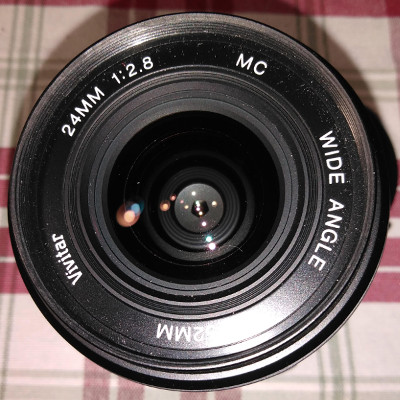
|
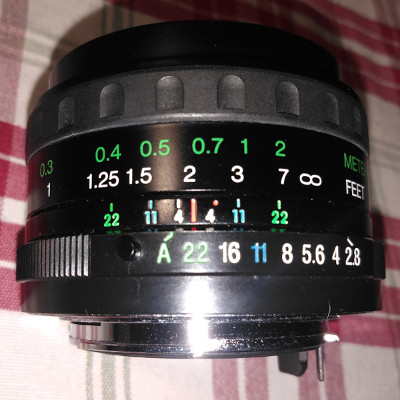
|
The mechanics of this lens are good though partially plasticky.
The whole feels tight and the movement is fluid and flawless, the resistance to the focus movement is constant and average, maybe a bit harder (that is not a con, just a fact) than in other lenses.
The one in my possession is in very good condition, the lenses are super-clean and there no scratch whatsoever; the back is so clean and the metal edges so sharp that I suspect that it's never been used, it looks like it's never been attached to a camera before now.
Manual focusing is pleasant, though very difficult on an APS-C reflex camera (such as the Pentax K50), having it on a mirrorless camera and good focus assist definitely makes the difference.
My review here is based on the images taken with the 24MP Fujifilm XT-20.
One important technical aspect here is that the XT-20 sport (like the other Fuji cameras) unrivalled RAW-to-JPEG conversion process, so I almost always use unretouched JPEGs straight from the camera and this speeds up testing without compromising its quality.
And now... let's cut to the chase!
The whole feels tight and the movement is fluid and flawless, the resistance to the focus movement is constant and average, maybe a bit harder (that is not a con, just a fact) than in other lenses.
The one in my possession is in very good condition, the lenses are super-clean and there no scratch whatsoever; the back is so clean and the metal edges so sharp that I suspect that it's never been used, it looks like it's never been attached to a camera before now.
Manual focusing is pleasant, though very difficult on an APS-C reflex camera (such as the Pentax K50), having it on a mirrorless camera and good focus assist definitely makes the difference.
My review here is based on the images taken with the 24MP Fujifilm XT-20.
One important technical aspect here is that the XT-20 sport (like the other Fuji cameras) unrivalled RAW-to-JPEG conversion process, so I almost always use unretouched JPEGs straight from the camera and this speeds up testing without compromising its quality.
And now... let's cut to the chase!
Sharpness and contrast
The sharpness and contrast of this lens are, respectively, good (but check for more) and average.
As for sharpness, the matter is actually a bit more complex:
A trend is evident here: optically, this is a lens much better suited for street photography, group portraits, to shoot flowers, etc. and I can say loud that it even excels at times, but I wouldn't recommend it for landscapes.
I expect this to be even more evident on the full frame format but to make sure of that I should own one such camera...
Contrast is nothing special but is definitely good, certainly suitable for mild post-processing, so to further improve the general IQ.
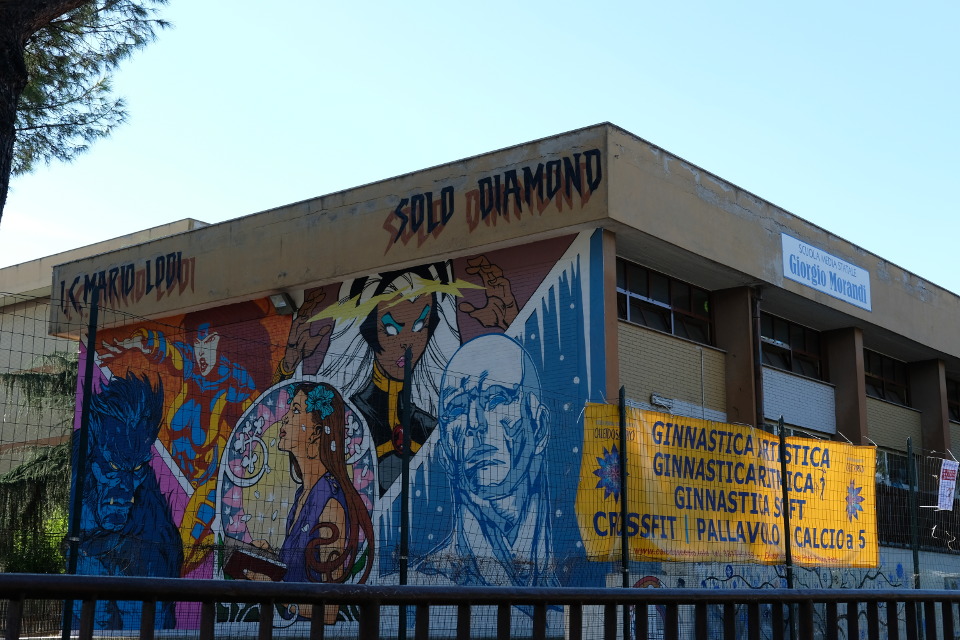
The image above is not post-processed, produced with the standard (Astia) film simulation on the Fujifilm XT-20, resized for the web site. You can notice that the sharpness is very good, and I pixel-peeped it at 100% magnification from corner to corner to ascertain the quality of it.
I invite you to click here and see for yourselfthe full JPEG (6000x4000).
Please, notice the pine needles on the top-left corner: they are sharp and there is no fringing at all!!!
As for sharpness, the matter is actually a bit more complex:
- centre sharpness, for images at a very short distance, is always surprisingly good, even at full aperture, i.e. f/2.8, I must actually say that at f/2.8 the result is exceptional to me;
- centre sharpness is very good also for shots at longer distances, but shows just a bit of softness at f/2.8;
- borders and corners are good to very good for short and mid-distances but suffer in the long/infinity distance
A trend is evident here: optically, this is a lens much better suited for street photography, group portraits, to shoot flowers, etc. and I can say loud that it even excels at times, but I wouldn't recommend it for landscapes.
I expect this to be even more evident on the full frame format but to make sure of that I should own one such camera...
Contrast is nothing special but is definitely good, certainly suitable for mild post-processing, so to further improve the general IQ.

The image above is not post-processed, produced with the standard (Astia) film simulation on the Fujifilm XT-20, resized for the web site. You can notice that the sharpness is very good, and I pixel-peeped it at 100% magnification from corner to corner to ascertain the quality of it.
I invite you to click here and see for yourselfthe full JPEG (6000x4000).
Please, notice the pine needles on the top-left corner: they are sharp and there is no fringing at all!!!
Colours
I must admit that I rarely find big -or even noticeable- differences
between the colour reproduction (or should I say "transimission"?) features
of lenses.
A few times I notice the vibrance of tones from Pentax glasses or the depth of some Zeiss items. And yes, I've noticed some "old style" look of shots taken with Olympus H.Zuiko lenses and possibly some coldness by the Nikon stuff, but those are definitely exceptions.
That said, I see a faithful and equilibrated rendition of colours with the Vivitar 24mm, much in line with almost all of the lenses in my possession.
If you like charged tones, this lens is not for you, but I prefer it to be this way. Otherwise, you can trivially process the image or -if you have a Fuji camera- pick a non-standard film simulation from the menu, i.e. you can set the camera to emulate the lovely Velvia film colours.
A few times I notice the vibrance of tones from Pentax glasses or the depth of some Zeiss items. And yes, I've noticed some "old style" look of shots taken with Olympus H.Zuiko lenses and possibly some coldness by the Nikon stuff, but those are definitely exceptions.
That said, I see a faithful and equilibrated rendition of colours with the Vivitar 24mm, much in line with almost all of the lenses in my possession.
If you like charged tones, this lens is not for you, but I prefer it to be this way. Otherwise, you can trivially process the image or -if you have a Fuji camera- pick a non-standard film simulation from the menu, i.e. you can set the camera to emulate the lovely Velvia film colours.
Aberrations, flare control, etc.
My fault, I don't go in deep looking for the aberrations, it takes time.
I have not checked for distortion, though at a glance to the pictures I can say that there is some, I bet you wouldn't choose it for architecture photography.
Also, I didn't check for coma nor for longitudinal chromatic aberrations, I'm sorry; unlikely I ever will.
At long-distance/infinity, the degradation at borders and corners becomes apparent; the impression is that at such distance sphericity plays a major role, where at 15-20 mt there is no issue.
This is common to many wide-angle products, and it is even possible that the focus run is a bit too short. If you could focus "beyond" infinity (some lenses allow that), the borders may improve, possibly with a loss in the centre, but the image would be more equilibrated.
Or maybe the adapter is not perfect and should accomodate for one more millimetre, who knows...
That said, the aberration I hate most is lateral CA (fringing), and this lens in exceptional in this regard!
I am displaying here some images with the worst case of lateral chromatic aberration I could obtain, in the extreme corner.
It is a really remarkable result (how well controlled the aberration is, in such an old lens), especially if you consider that I really tried to look for a flaw in this aspect and the best I could get is a ridiculous amount of magenta leak in the foliage:
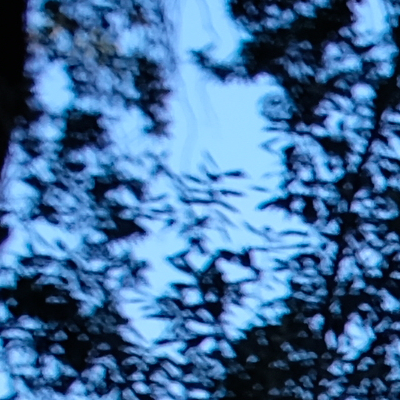
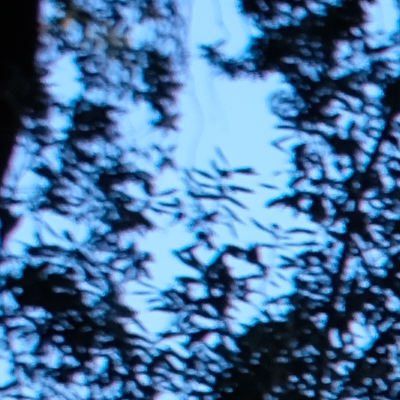
About flare... it is evident and can be important, and also veiling is possible, but for some reason the characteristic of this lens doesn't annoy me. When there is veiling (and there isn't much), some contrast is still there.
As for flare, you can provoke it and it shows some curious if not likable artifacts such as coloured shapes. In the next image, there are some and there is veiling too, also check the 100% crops where you see the details of the UFO/jellyfish shapes:
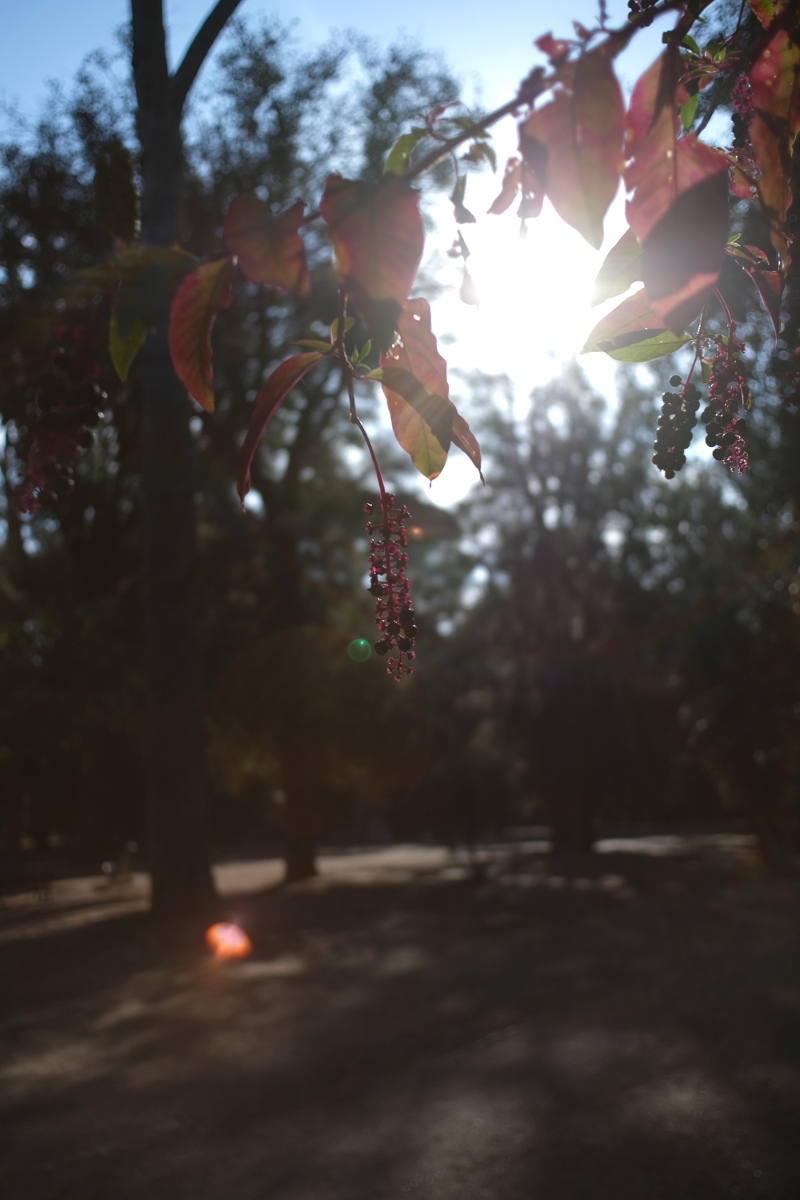
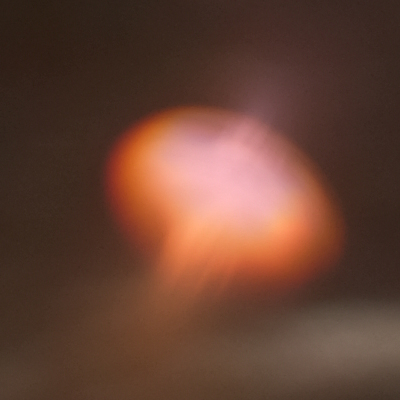
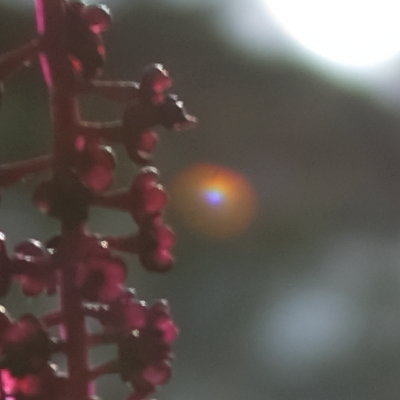
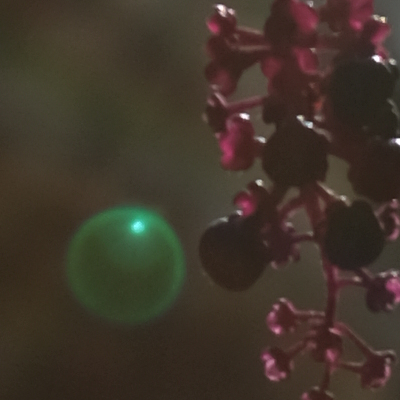
I have not checked for distortion, though at a glance to the pictures I can say that there is some, I bet you wouldn't choose it for architecture photography.
Also, I didn't check for coma nor for longitudinal chromatic aberrations, I'm sorry; unlikely I ever will.
At long-distance/infinity, the degradation at borders and corners becomes apparent; the impression is that at such distance sphericity plays a major role, where at 15-20 mt there is no issue.
This is common to many wide-angle products, and it is even possible that the focus run is a bit too short. If you could focus "beyond" infinity (some lenses allow that), the borders may improve, possibly with a loss in the centre, but the image would be more equilibrated.
Or maybe the adapter is not perfect and should accomodate for one more millimetre, who knows...
That said, the aberration I hate most is lateral CA (fringing), and this lens in exceptional in this regard!
I am displaying here some images with the worst case of lateral chromatic aberration I could obtain, in the extreme corner.
It is a really remarkable result (how well controlled the aberration is, in such an old lens), especially if you consider that I really tried to look for a flaw in this aspect and the best I could get is a ridiculous amount of magenta leak in the foliage:


About flare... it is evident and can be important, and also veiling is possible, but for some reason the characteristic of this lens doesn't annoy me. When there is veiling (and there isn't much), some contrast is still there.
As for flare, you can provoke it and it shows some curious if not likable artifacts such as coloured shapes. In the next image, there are some and there is veiling too, also check the 100% crops where you see the details of the UFO/jellyfish shapes:




Bokeh
I have read more than once that every lens, at some distance, has a bad
bokeh, usually meaning that it becomes nervous for a specific range,
though there are some very rare lenses that show no weakness from this point
of view, at any distance.
Frankly, I never thoroughly check for this, but the impression is that this lens has:
In other words, once again the lens has no terrible deficiency and performs admirably in the very short distances.
Frankly, I never thoroughly check for this, but the impression is that this lens has:
- a very creamy and pleasant background bokeh when the focus point is at a very short distance;
- for what is worth, in such condition also the foreground out-of-focus areas are OK
- the bokeh is generally good or very good
- at a first look, the weakness of this lens seems to be the background when the focus is at 2-5 mt, but it is nothing terrible. Actually, some nervousness in the background foliage can be spot in the image in the section about flare, but it it the worst I see in my few shots, at the moment
In other words, once again the lens has no terrible deficiency and performs admirably in the very short distances.
Some illuminating shots
To further illustrate why I like this tiny lens so much, here are
some shots at flowers (oh, how original!), taken at full aperture
-applause!
I'd like you to enjoy the smooth bokeh and the excellent sharpness in the centre and don't forget that this is full aperture -sorry, did I already mention it?!
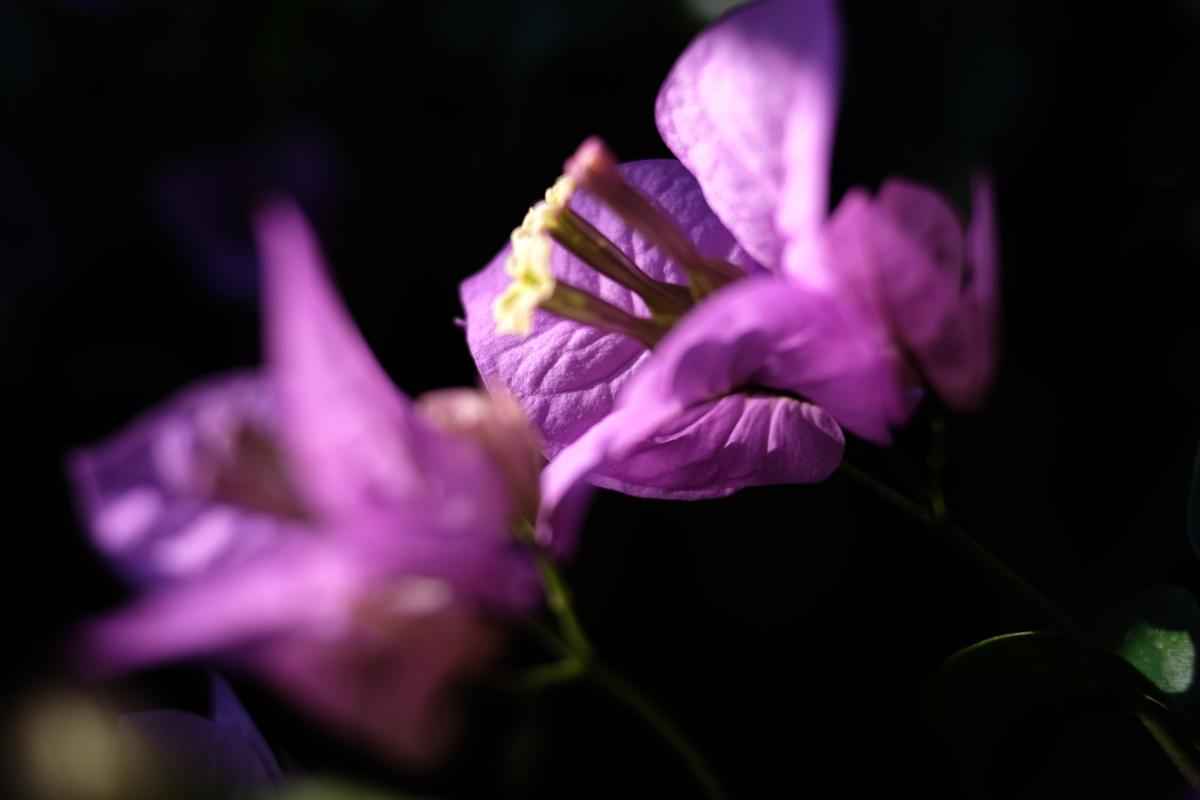
This first image is a scaled-down of the original JPEG, with no retouch applied.
The bokeh and the colours are what you need to check here.
The next two images are at 100% magnification crops and you an appreciate the relevant amount of sharpness.
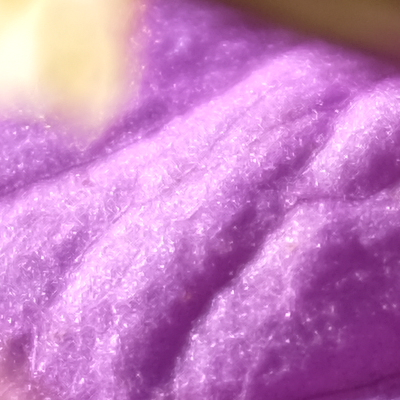
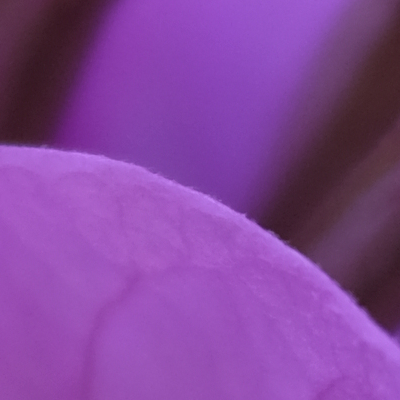
The last image, in particular, is exemplary in how you can discern the small hair on the edge of the flower.
It means that both sharpness and micro-contrast are to be praised; the latter in the light of the fact that the background tint is very similar to that of the hair itself.
Now I want to look at the sharpness at the centre of these two images (100% crop), respectively at f/2.8 and at f/4:
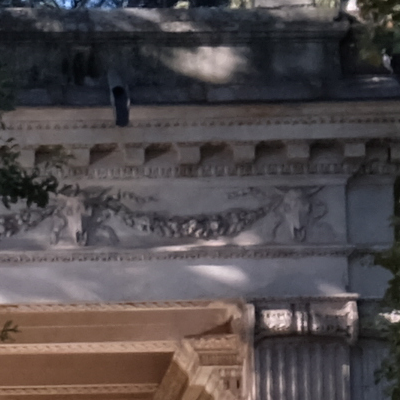
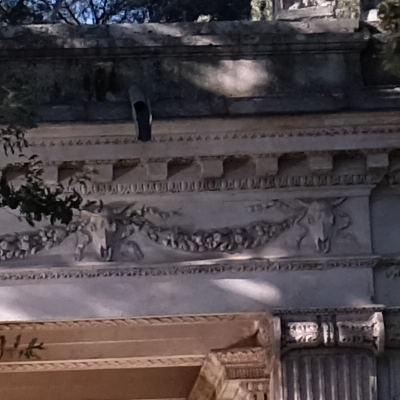
The former picture shows that sharpness is rather shabby at f/2.8; the latter testifies how it improves a lot at f/4 (and it will be a bit better at f/5.6).
I'd like you to enjoy the smooth bokeh and the excellent sharpness in the centre and don't forget that this is full aperture -sorry, did I already mention it?!

This first image is a scaled-down of the original JPEG, with no retouch applied.
The bokeh and the colours are what you need to check here.
The next two images are at 100% magnification crops and you an appreciate the relevant amount of sharpness.


The last image, in particular, is exemplary in how you can discern the small hair on the edge of the flower.
It means that both sharpness and micro-contrast are to be praised; the latter in the light of the fact that the background tint is very similar to that of the hair itself.
Now I want to look at the sharpness at the centre of these two images (100% crop), respectively at f/2.8 and at f/4:


The former picture shows that sharpness is rather shabby at f/2.8; the latter testifies how it improves a lot at f/4 (and it will be a bit better at f/5.6).
Quick conclusion
I wouldn't dare to say that I have found a hidden gem, but I can go far enough to state that for the price I paid for it, it is a steal.
It is a good all-rounder, it has very good characteristics, and I'm definitely going to keep it.
The most obvious objection I see coming is about the purpose of such a purchase: wide-angle lenses are usually best suited for landscapes, and this is not the case because long-distance subjects are the Achille's heel of this glass.
Nevertheless, for most other purposes it is very satisfying to excellent and I think that to keep is a very good idea, not just because of the ridiculous price in itself but also because it is not trivial to find a good legacy 24mm and not even trivial with the modern offering.
And if you like to take pictures at short distance, of flower and plants, the Vivitar 24mm f/2.8 made by Cosina is an excellent pick, unless you need a real macro lens with a better magnification ratio.
The other objection is much less obvious and it has to do with handling.
People like me who love old items such as this one, also put much attention to the aspect of the "feeling" and the experience of manual focusing.
Though the movement is very fluid and precise, maybe a longer throw and a larger grip would transmit a better feeling, and I definitely like more metal under my fingers.
But this has a lot to do with personal taste, even though I don't think that any photographer would prefer, in this regard, the movement of a generic lens to the perfection of a Zeiss Distagon.
That said, even considering the fact that it is generally better to pair sensors with modern lenses that should be optimized for them, you may often find that some of their optical flaws, even when dramatic, are masked by camera ad-hoc processing.
The case of the Fuji 27mm is exemplary, much its limits are removed by the intervention of the camera!
All in all, this is a lens I want to recommend without hesitation; it is not for all (especially if you can't live without autofocus), nor for all purposes, but it's at least worth a try.
| Back to the site index | ||
| Do you love Italy? Check my little site, I hope to find the time to make it grow! | ||